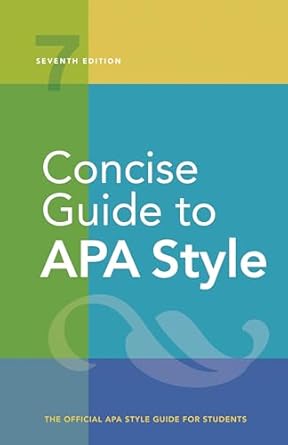[toc]
citing informal sources software a quick guide
Concise Guide to APA Style: 7th Edition (OFFICIAL)
Page 296 Review
Analyzing Informal Publications and Software Citations: A Deep Dive
This excerpt delves into the intricacies of citing informally published works and software within academic writing, offering practical guidelines and examples.
It highlights the importance of acknowledging sources even when they haven’t undergone traditional peer review and clarifies when software citations are necessary.
Informally Published Work: Navigating Preprint Archives and Institutional Repositories
The section begins by addressing how to cite work from preprint archives or institutional repositories.
It provides examples using:
Leuker, C., Samartzidis, L., Hertwig, R., & Pleskac, T.
J. (2018).
When money talks: Judging risk and coercion in high-paying clinical trials.
PsyArXiv. https://doi.org/10.17605/OSF.
IO/9P7CB and Stults-Kolehmainen, M.
A., & Sinha, R. (2015).
The effects of stress on physical activity and exercise.
PubMed Central. https://www.ncbi.nlm.nih.gov/pmc/articles/PMC3894304
The text then illustrates both parenthetical and narrative citation styles:
“Parenthetical citations: (Leuker et al., 2018; Stults-Kolehmainen & Sinha, 2015)”
“Narrative citations: Leuker et al. (2018) and Stults-Kolehmainen and Sinha (2015)”
It emphasizes a crucial distinction:
“The informally published work may not be peer reviewed (as with Leuker et al’s preprint article from PsyArXiv), or it may be the author’s final, peer-reviewed manuscript as accepted for publication (as with Stults-Kolehmainen & Sinha’s manuscript from PubMed Central).
See Section 8.5 for more on use of an archival version.”
This clarification is essential because it guides researchers on how to treat different types of informal publications, acknowledging that some may represent the final, accepted version of a work, while others are still in the preprint stage.
Citing ERIC Database Resources
The excerpt moves on to discuss citing informally published work found in the ERIC database, providing the example:
Ho, H.-K. (2014).
Teacher preparation for early childhood special education in Taiwan (ED545393).
ERIC. https://files.eric.ed.gov/fulltext/ED545393. pdf
Again, both parenthetical and narrative citations are shown:
“Parenthetical citation: (Ho, 2014)”
“Narrative citation: Ho (2014)”
The text highlights a specific instruction for ERIC citations:
“ERIC assigns document numbers to works in its database.
Include this number in parentheses after the title of the work.”
This is a key detail to ensure accuracy and ease of retrieval for readers.
Software and Mobile App Citations: When and How
The excerpt then shifts its focus to citing software and mobile apps.
It establishes a general rule:
“Common software and mobile apps mentioned in text, but not paraphrased or quoted, do not need citations, nor do program-ming languages.”
The definition of “common” is contextual:
“‘Common’ is relative to your field and audience—examples of software or apps that do not require citations include Microsoft Office (e.g., Word, Excel, PowerPoint), social media apps (e.g., Facebook, Instagram, Twitter), survey software (e.g., Qualtrics, Survey Monkey), Adobe products (e.g., Adobe Reader, Photoshop, Adobe Acrobat), Java, and statistical programs (e.g., R, SPSS, SAS).”
However, the excerpt clarifies the appropriate way to mention the software used:
“If you used common software or mobile apps during your research, simply give the proper name of the software or app along with the version number in the text, if relevant.”
Key Takeaways
- Informal publications require citations: Even if a work hasn’t undergone peer review, it’s crucial to acknowledge the source, differentiating between preprints and accepted manuscripts when possible.
- ERIC citations require the document number: Including the ERIC document number after the title ensures accurate identification and retrieval.
- Common software doesn’t need formal citation: Software widely used within a field generally doesn’t need a full citation, but the name and version number should be mentioned in the text.
In summary, this excerpt provides valuable guidance on navigating the complexities of citing informally published works and software, promoting accurate and ethical research practices.
Buy full ebook for only $18: https://www.lulu.com/shop/american-psychological-association/concise-guide-to-apa-style-7th-edition-official/ebook/product-rmzpq54.html?page=1&pageSize=4
Citing Informal Sources Software A Quick Guide
Read more: Referencing Tables & Figures: A Guide for Academic Writing


Leave a Reply